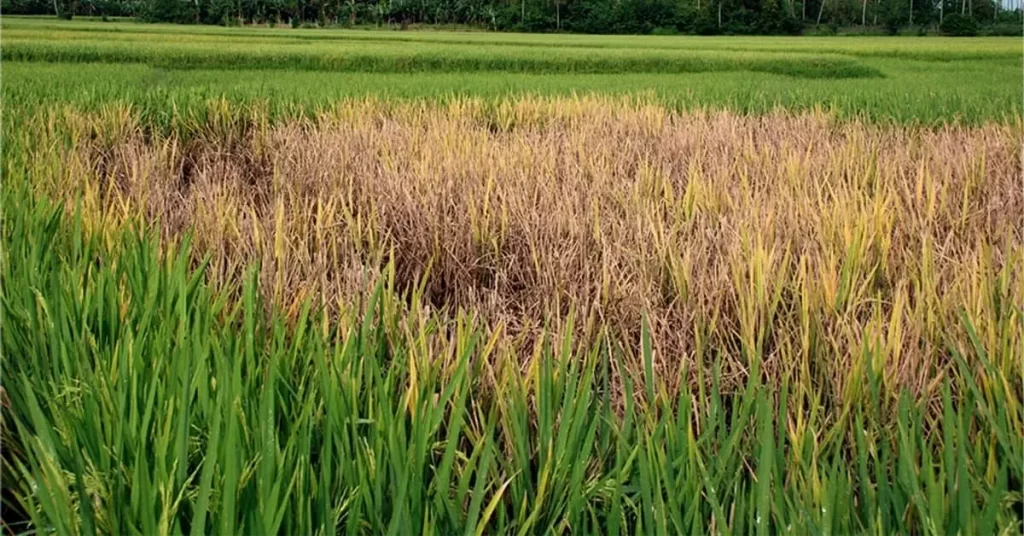In the United States, bacterial leaf blight of rice is caused by Xanthomonas oryzae pv. oryzae (Xoo), and results in severe yield losses and grain discoloration. The bacterium was first identified on rice in Louisiana in 1954 and has since been reported throughout the southern United States. In California, bacterial leaf blight is considered the most important disease of irrigated rice.
Symptoms include water-soaked lesions on leaves that enlarge and turn brown to black; lesions may also develop on sheaths and glumes. Infected plants often die prematurely, and yield losses of up to 60% have been reported. The grain from infected plants is typically discolored, with a reddish-brown or black hue. There is no cure for bacterial leaf blight, so it is important to employ cultural practices that help reduce disease incidence.

Bacterial leaf blight of rice
Occurrence/distribution: The most common BLB of rice is caused by Xanthomonas oryzae. BLB in paddy is probably the world in distribution.

Symptoms: The symptoms appear on leaf blades and sheaths as small linear, water-soaked areas that soon elongated and coalesce into irregular, narrow, yellowish, or brownish stripes. Severe infection cause leaves to turn yellow and die from the tip to downward. They also retard spike elongated and cause blushing. The small lesion from on the kernels as well.
Recurrence of the disease: The disease develops mainly in rainy, damp weather. The bacteria overwinter on the seed and crop residues and are spread by rain, direct contact with an insect.
Control measure: The main control measures are the use of disease-free or treated seeds and crop rotation. Stubble and straw should be burned after paddy harvesting on unhealthy soil. After seeing the disease, an additional 20 kg of potash fertilizer per acre should be applied to the water. Spraying chelated zinc at the rate of 1 gram per liter of water reduces the severity of the disease.
